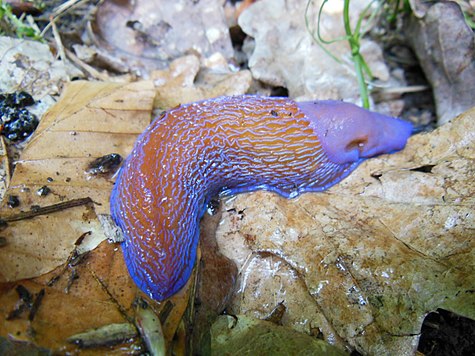Template:Species-2020-03
Species of the month[edit]
Carpathian Blue Slug[edit]
Bielzia coerulans Bielz, 1851
Some facts about this shell-less terrestrial gastropod mollusc:
Size and coloration: Juveniles are yellowish brown with dark lateral bands. Adult slugs turn blue and becomes 100–140 mm in length.
Distribution: Endemic to the Carpathian Mountains in Eastern Europe, however it is not evenly distributed over the entire range and is often not present in habitats that seem to be suitable. According to the IUCN it is native to the Czech Republic (only in Moravia), Hungary, Romania, Slovakia, southern Poland and the Ukraine. The species has the potential to be invasive as demonstrated by introduced populations in Kiev and western Germany. For example it was found in 2012 in Germany (presumed introduction in Westerwald, Rhineland-Palatinate).
Protection status: IUCN: Bielzia coerulans Bielz, 1851 (Least Concern). Last assessed by German malacologist Frank Walther in June 20, 2016. There are no conservation measures in place (nor are they needed) however the species is protected in Hungary.
Etymology: Its generic name Bielzia is an eponym of the German malacologist Michael Bielz. Its specific name is the Latin word coerulans meaning "turning blue".
The Carpathian Blue Slug (Bielzia coerulans) is also known simply as Blue Slug. It is the only known species within the Bielzia genus. The species is found in both deciduous forests and coniferous forests. The slug prefers rich structured habitats, but if a minimum of shelter such as dead wood and ground vegetation is available it can also be found in pine- and spruce monocultures. The slugs mature in June to July and after copulation lay 30–80 eggs in one single clutch. After egg deposition the adults then die. Half grown juveniles hibernate during the winter, and a new generation of fully grown slugs appear in May the next year.
